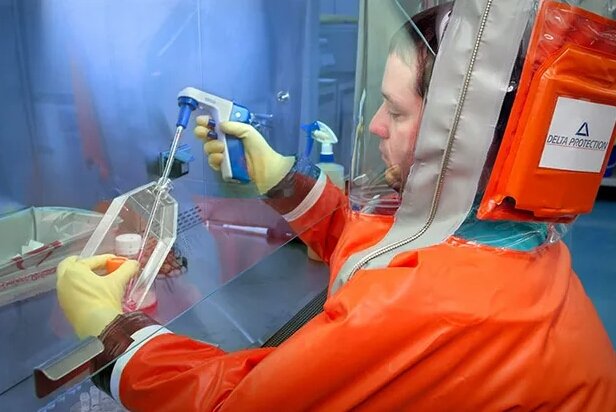Risky mutant virus research can once again receive government funding
The NIH will add an extra review step for grants that propose making viruses more dangerous

The National Institutes of Health are lifting the funding ban on risky experiments that could make viruses like the flu, MERS, or SARS more harmful or contagious, STAT News reports. Grants that propose mutating viruses to make them more dangerous will go through an extra layer of review before the final funding decision.
These controversial experiments are called “gain-of-function” experiments, and their risks and benefits are fiercely debated. On the one hand, tweaking a virus to make it more contagious might help scientists understand what lets a virus like bird flu, for example, make the jump from infecting birds to spreading among people. But if one of these enhanced viruses were to infect the general public, they could cause a potentially deadly, human-made pandemic. Such a breach isn’t out of the question, Sharon Begley reports for STAT News: government labs have mishandled dangerous materials like anthrax, bird flu, Ebola, and smallpox in the past.
The NIH paused federal funding for these gain-of-function experiments in October 2014 while the agency figured out the best way to review such proposals. Three years later, the NIH is now lifting the ban because this “research is important in helping us identify, understand, and develop strategies and effective countermeasures against rapidly evolving pathogens that pose a threat to public health,” NIH director Francis Collins said in a statement.
The new plan is to add an extra review step by a “multidisciplinary group” in the Department of Health and Human Services. This group will evaluate promising proposals for possible dangers and potential benefits, and will propose strategies to reduce the risks.
The news is already getting mixed reactions, Begley reports, which isn’t surprising given the ongoing back-and-forth by experts in the field. Several virology experts argued in a 2015 article published in the journal Nature Reviews Microbiology that tweaking a virus’s DNA to see how it changes is the only way to know for certain how a virus’s genes affect its function. That knowledge is key for understanding things like how viruses become drug resistant, or gain the ability to infect new hosts.
But Harvard epidemiologist Marc Lipsitch fired back in the same 2015 article that creating new, more dangerous viruses “entails a unique risk that a laboratory accident could spark a pandemic killing millions.” He told Begley that adding extra review for this research is “a small step forward.” But, he added, “my view is that a review of the sort proposed should disallow such experiments.”
Hi! I am a robot. I just upvoted you! I found similar content that readers might be interested in:
http://www.theverge.com/2017/12/19/16795762/nih-funding-virus-research-pathogens-pandemic-potential-flu-mers-sars